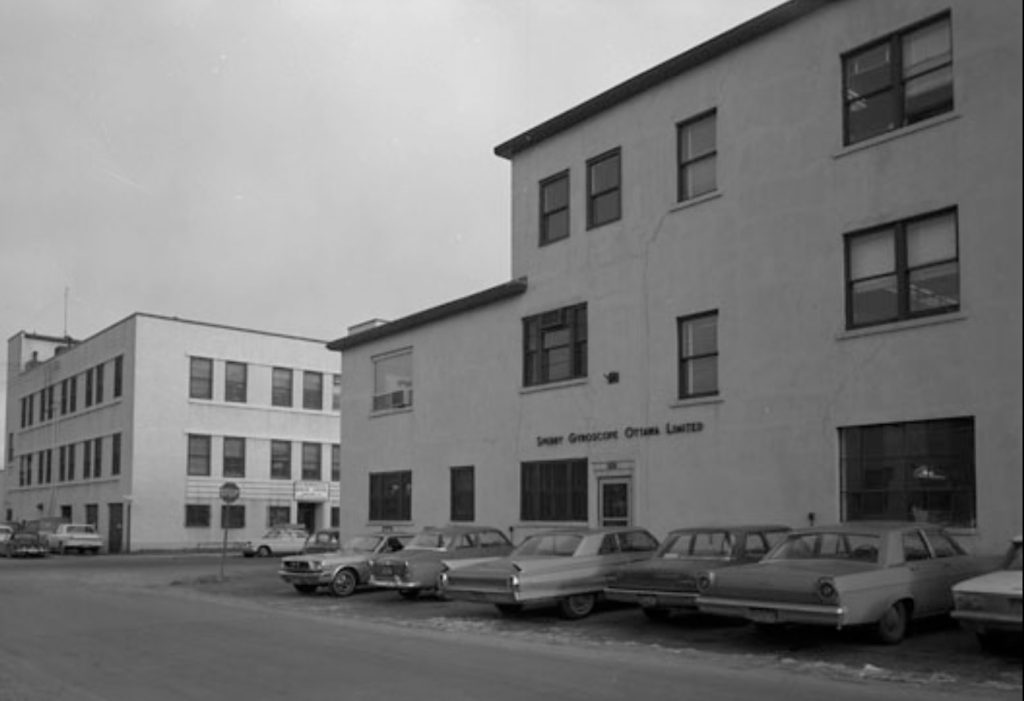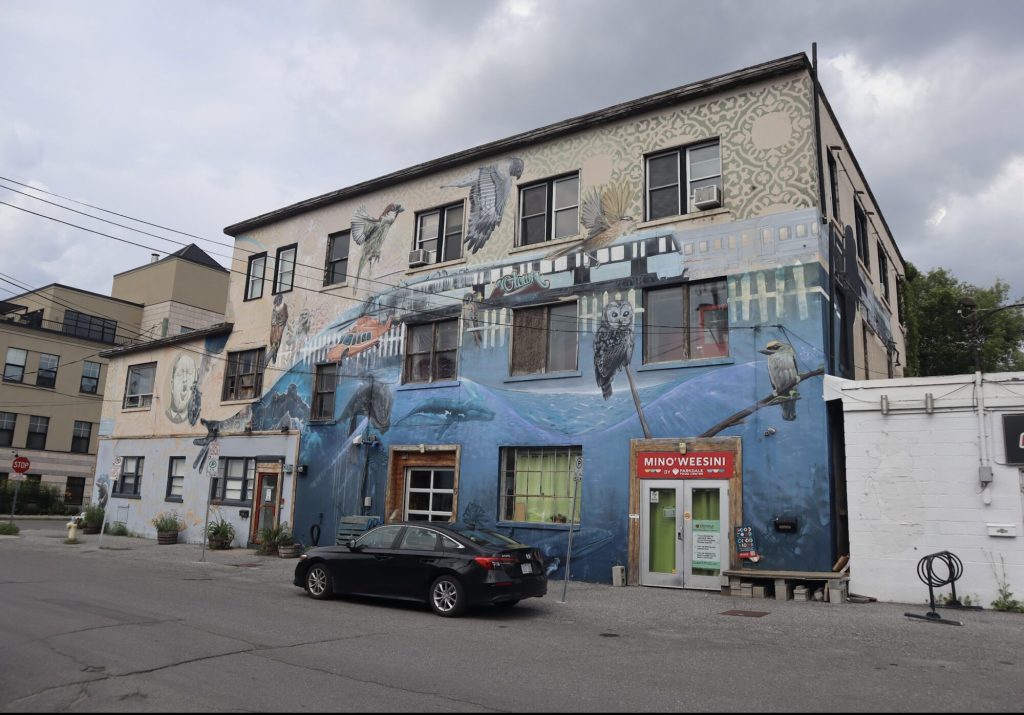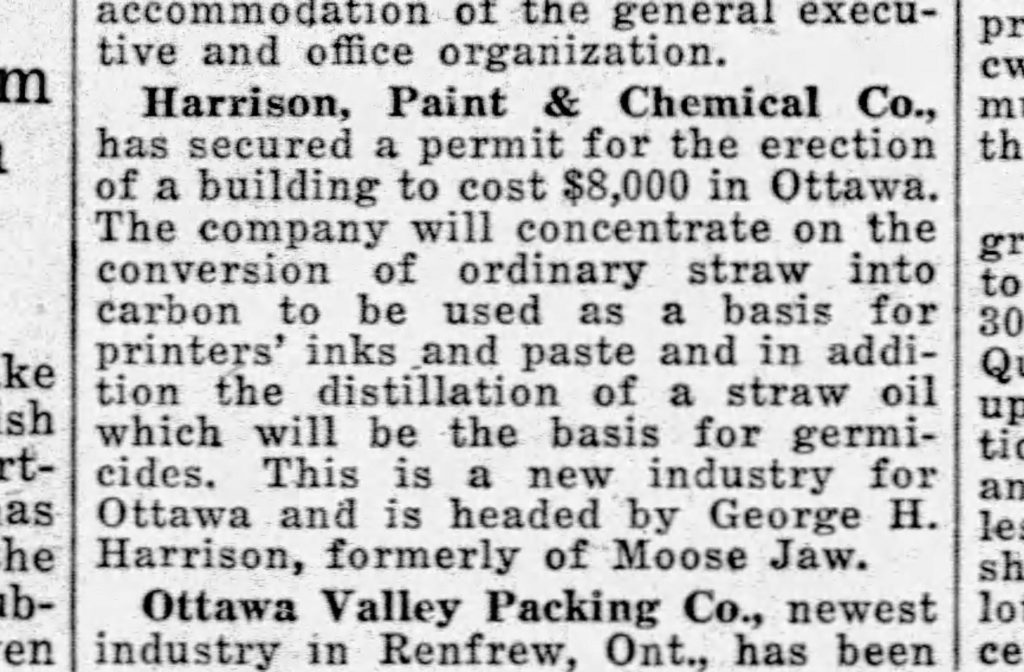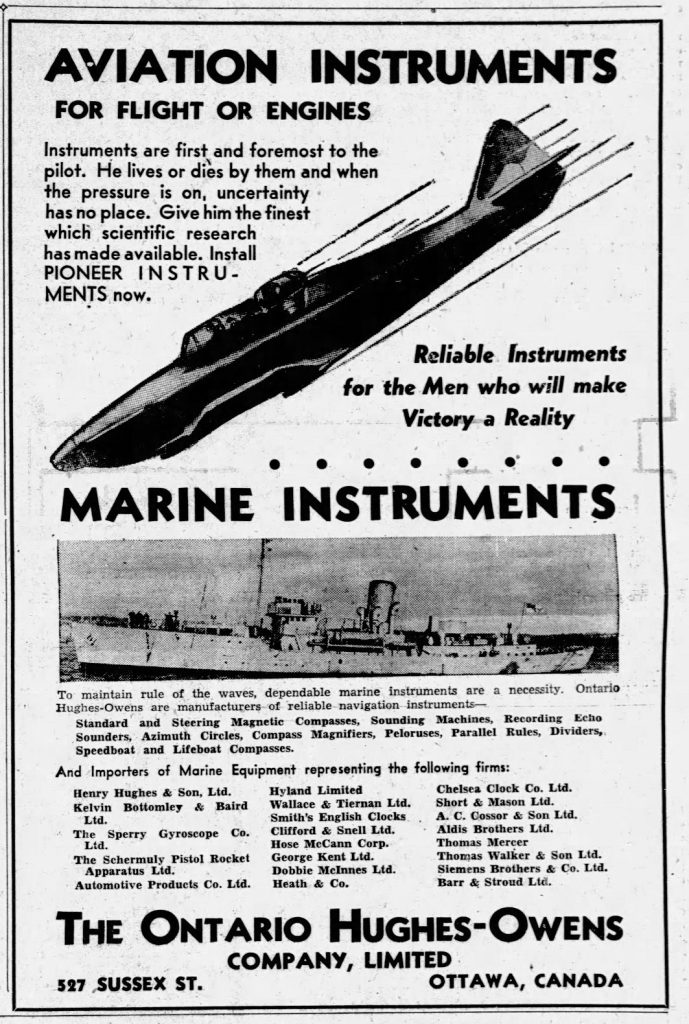Along Spencer Street in Hintonburg, running east from Hamilton Avenue towards Parkdale is a small, long, two-storey industrial building. It is somewhat nondescript, blending into a near-full city block of weathered old former factories that have found new life.
In February 1927, a Canadian man’s invention made the front page news of almost every newspaper across North America. Industrial chemist George H. Harrison of Moose Jaw, Saskatchewan had perfected a process by which a ton of straw could be burned to extract $250 worth of useful products from the smoke, including paint, germicides and even gas that could power automobiles and illuminate buildings.
The popular American magazine Farm and Fireside broke the news about Harrison’s discovery, which had major potential significance worldwide. The magazine Popular Science gave it particularly detailed coverage.
In fact it was the pursuit of cheap gasoline which drove Harrison’s early experiments. As a chemist at the Saskatchewan Bridge and Iron Company from 1909 to 1919, Harrison developed a straw gas which propelled his car through the streets of Moose Jaw and Saskatoon in 1917. The car was even gleaming with paint made from the straw!
The idea at the time was impractical though, as it required a huge bag of gas to be placed on the roof of the car.
He instead turned his attention to the by-products of his gas discovery. In early experiments he discovered that he could produce 800 pounds of vegetable carbon and five gallons of tar from a ton of straw. Later he found that the vegetable carbon could be manufactured into an elastic black enamel while valuable aniline dyes could be obtained from the tar in addition to washing compounds and over 100 other by-products.
Harrison had taken out patents covering the process in Canada, the U.S., Russia and many other countries where straw was extensively produced. The U.S. government offered to finance his research work, but he declined the offer as he was in charge of the Saskatchewan Bridge and Iron plant in Moose Jaw that was manufacturing shell cases for the Canadian artillery in France, and he did not want his research to interfere with the manufacture of war materials.
Following the war, Harrison left Moose Jaw and opened a research plant in St. Paul, Minnesota, where he remained for most of the 1920s working on his invention.

He set out to build a unit whereby every farmer could burn straw and produce gas for their own use in a variety of ways. He also wanted to explore how his straw oil could be used as a germicide and disinfectant. After experiments in the Mayo Clinic, it was determined that the straw oil was a stronger disinfectant than phenol — which came from coal tar — and had the advantage of being nonirritant, neither destroying nor burning living tissues. Other uses were discovered as well: waterproofing materials, non-flammable dry-cleaning fluid, liquid asbestos roof coating, newspaper ink, and high quality paints which could be made on a commercial scale.
By 1929, he had relocated to Merrill, Wisconsin where he created the Harrison Paint and Chemical Company Inc.
A legacy project
In the summer of 1933, the 61-year old entrepreneur was in Ottawa looking for a location to build a factory for his life’s work, a discovery that he felt would change the world. Why he chose Ottawa is a question that has been lost to time.
He moved into a house on Daly Avenue, and in his research discovered a vacant parcel of land in Hintonburg at the corner of Hamilton Avenue and Spencer Street which interested him, kitty corner to the growingly successful Beach Foundry business.
He made an agreement with the owner of the land, Robert H. Brown, a local small-time mill operator and stable builder to construct a customized building to accommodate Harrison’s straw-conversion enterprise. The $8,000 building permit was taken out that fall, but it was somewhat contentious due to the mysterious and potentially dangerous chemical-based operations.
“It will be a plant for the conversion of ordinary straw into carbon as a basis for printers’ ink and paint,” reported the Ottawa Citizen, “and also the distillation of a straw oil which will be the basis for germicides.”
The building inspection permit department held up the permit, and the Board of Control held a special meeting to review it.
However, the City was in no position to reject new construction and enterprise in the midst of the economic depression. With support from the local alderman, H.D. Marshall, the permit was soon approved at the end of October, and in November, a notice of incorporation for the Harrison Paint and Chemical Company Ltd. of Ottawa was listed in the Canada Gazette, with a capital of $50,000.

Construction on Harrison’s unique, purpose-built factory occurred throughout the winter of 1933-1934, and was completed by the spring. However, Harrison never occupied the building.
As mysteriously as he arrived in Ottawa, he suddenly left.
Though the Harrison Paint and Chemical Company continued to be listed on the tax roll as the owner, it was a Wellington Street lawyer who was the listed contact in 1934. No conclusive trace of Harrison can be found after this point in time. It appears Harrison’s dreams went unfulfilled, his discovery never put into commercial practice.
Meanwhile, the unfortunate Robert H. Brown was stuck with a new expensive factory building in the middle of a depression and a world war looming. He could not find a tenant for the building through the remainder of the 1930s and surely lost a bundle on whatever taxes and loans he had to pay to retain it. He ended up losing it in 1938 to the original landowners he bought the land from, the Ottawa Land Association, likely at a major loss.
A new lease on life
It was, however, the war that would end up bringing new life to the empty factory. The Ontario Hughes-Owens Company was a local firm that started out in Ottawa in 1912 producing architect and surveyor equipment before branching out to produce scientific instruments, thermometers, and laboratory supplies out of a small factory on Sussex Street. After WWII began in 1939, they were awarded a series of small five-figure contracts to produce equipment for the war effort, but that would all change in the summer of 1940. Ontario Hughes-Owens began landing massive Canadian war contracts with the Department of Munitions and Supply for production of aircraft instruments, some worth over a million dollars apiece. The firm needed to expand, and fast.
Ontario Hughes-Owens acquired the abandoned Harrison factory, bought the two adjoining vacant lots, and took out a permit for a large addition to the factory. As quickly as they could get rolling, the factory went into production on “the overhauling, repairing and assembling of scientific airplane and marine instruments,” employing up to 150 workers.

That fall, the company was awarded two more large contracts worth over $2M for more aircraft supplies and the “manufacturing of magnetic compasses for Naval and Merchant ships, Aircraft, Tanks, etc. for the armed services.”
The factory was destined to play an important role in North American industry, just not the one that George H. Harrison originally envisioned for it.
The Ontario Hughes-Owens factory was one of Ottawa’s busiest during the war. They built up virtually the entire block fronting Parkdale, Spencer and Hamilton, and acquired land on the north side of Spencer and built there as well. By fall 1942 they were producing “Gun Aligning and Deflection instruments, Electric Speed and Distance Indicators, Periscopic-Type Tank Compasses, and many specialized instruments of a highly secret nature.” Obviously, this was a lot of important equipment to be used by Canada’s forces overseas.
Once the war ended, Hughes-Owens did not need as much space. They continued to produce scientific instruments, but began to focus on developing car racks, timers for stoves and washing machines, as well as the growingly popular (or unpopular, depending on your angle) parking meters. They had also become more nationally spread out.
In 1951, they sold the Hamilton Avenue property to the Sperry Gyroscope Company for over $1M. Sperry had a similar mandate of manufacturing and overhauling marine and aircraft instruments. The factory played a key role in production for the Korean war, and eventually Sperry products were in practically all commercial flights in Canada in the 1980s (Air Canada’s DC-8s, DC-9s, 747s and L-1011s were all Sperry-equipped). Many of Canada’s military aircraft used Sperry instruments and navigational devices as well.
The building became a Honeywell (part of the Sperry Aerospace Division) factory in the 1980s, and it was only in the last 25 years or so that the building was converted to small independent businesses as it is today.
The Harrison story is a fascinating one, leaving you to wonder what could have been. Perhaps Hintonburg would have been put on the map for being the nexus of some automotive or paint industry-changing product. We’ll never know.

